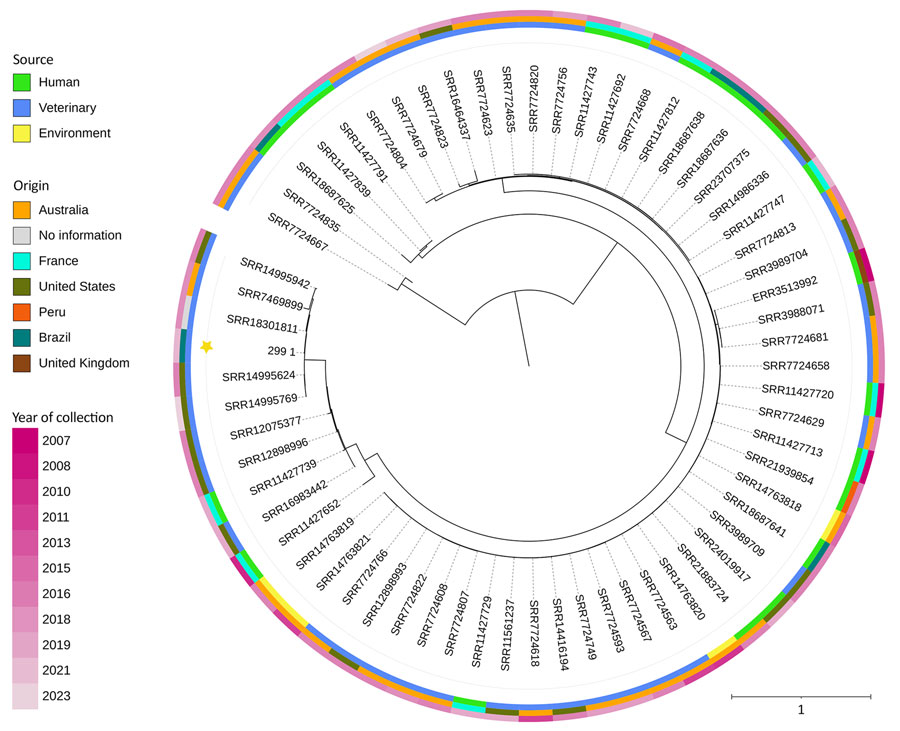Volume 31, Number 10—October 2025
Dispatch
Escherichia coli Sequence Type 131-H22 in Parrots from Illegal Pet Trade, Brazil, 2024
Figure

Figure. Phylogenetic analysis through a phylogenetic tree of Escherichia coli sequence type (ST) 131 isolated from different origins. The tree is rooted at the midpoint and generated to compare the studied strain with public genomes available in EnteroBase (https://enterobase.warwick.ac.uk), connecting 63 strains of ST131 E. coli. The subtypes from the database are subdivided into the avian and uropathogenic extraintestinal pathogenic E. coli pathotypes, along with their origin and the continent where they were isolated and described. The tree shows closely related strains from veterinary origins in South America and Oceania. Strain 299 from this study forms a monophyletic group with 5 sequences from GenBank (accession nos. SRR14995924, SRR7469899, SRR18301811, SRR14995624, and SRRR144995769). This group is related to 3 uropathogenic E. coli. strains of human origin in Europe (GenBank accession nos. SRR11427839, SRR11427652 and SRR11427791).